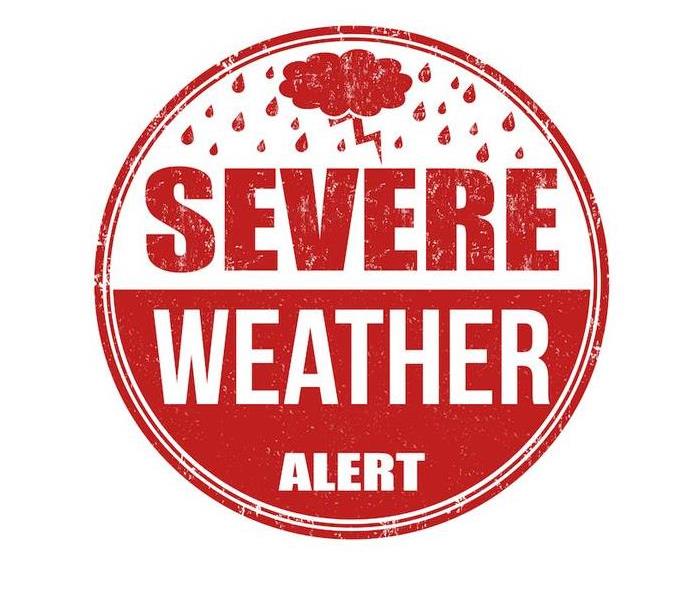Storm Warnings Can Help You Prepare for Any Kind of Weather | SERVPRO® of North Fort Worth
7/21/2022 (Permalink)
There are many different kinds of weather warnings; in fact, 42 types are sent out around the United States. Each of these alerts is categorized into one of seven different groups. Trying to take this all in when a storm is on the rise can be hard, so it’s important to understand the information before severe weather strikes.
When you understand what a warning or advisory could mean for our community, you can best prepare yourself and your family for any weather. You can also defend your home against any potential damage.
While having a basic understanding of all weather scenarios is beneficial, it is critical to understand the weather that can have the greatest impact on Fort Worth.
How Alerts Are Issued
So, what factors go into determining when and why these notifications are sent? How are the characteristics of a storm provided when weather forecasts are only a best guess at what type of weather will strike? There are various elements that influence the delivery of warnings.
The National Weather Service is in charge of weather prediction and, as a result, issuing any required alerts. These alerts are sent out from six regional offices across the country and other sub-offices, allowing for more location-specific warnings. You’ll find your alerts are issued straight from our community in the Southern Region headquarters in Fort Worth!
Meteorologists and other NWS workers use a variety of data, including aerial radars, detectors, seismic activity meters and even solar output, to create weather predictions. While this information can vary according to how severe weather conditions are, the point is to make it as accurate a forecast as possible.
The Most Important Alerts to Understand
Knowing the difference between a “watch” and a “warning” is a good thing to know when preparing yourself and your home for severe weather. This language is common in many alerts issued, including those for thunderstorms, hurricanes and flooding.
A watch indicates that a storm is brewing and that you should monitor the situation and take precautions when necessary. Watches are sent out in a larger area, while a warning is issued for a more specific area, like a city or county. A warning means that threats are approaching and you should immediately prepare yourself and your home for a potential disaster.
It is also helpful to know what weather conditions may impact your hometown, so you’ll be able to prepare beforehand. For example, Fort Worth contains several natural and man-made lakes. These lakes occasionally overflow, causing flooding, so residents are notified as soon as the situation develops.
Protecting Your Home During a Storm
Knowing what weather alerts may be issued in our area is a great way to protect yourself and your home before a storm, but there are other precautions you can take to minimize property damage.
Cleaning your gutters and drains and securing your outdoor furniture are both great ways to protect the inside and outside of your home from flood damage and wind damage. Locate a safe shelter with essentials and develop an evacuation plan for your family if you end up needing to flee.
If a storm rolls through your area and leaves your home with damage to be repaired, give SERVPRO a call. We can devise and execute a restoration plan to get your home back in shape.
Understanding what weather may impact our hometown can help you prepare yourself and your home for a disaster. Educate yourself about the various alerts that could be issued to you so you can withstand any weather conditions.
Experienced storm damage to your home or property? Contact us today for a quick response!






 24/7 Emergency Service
24/7 Emergency Service
